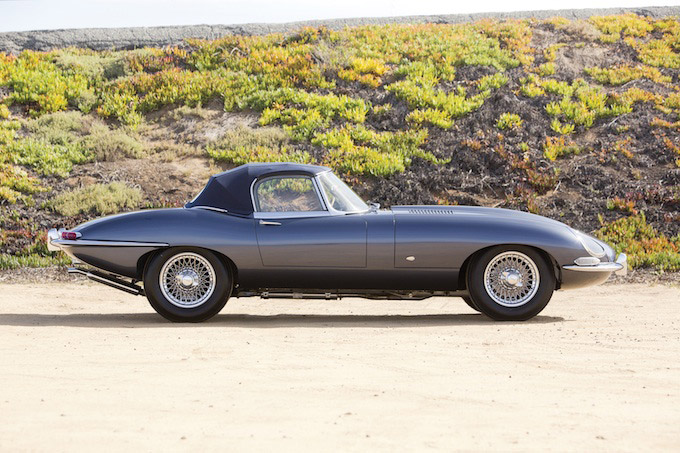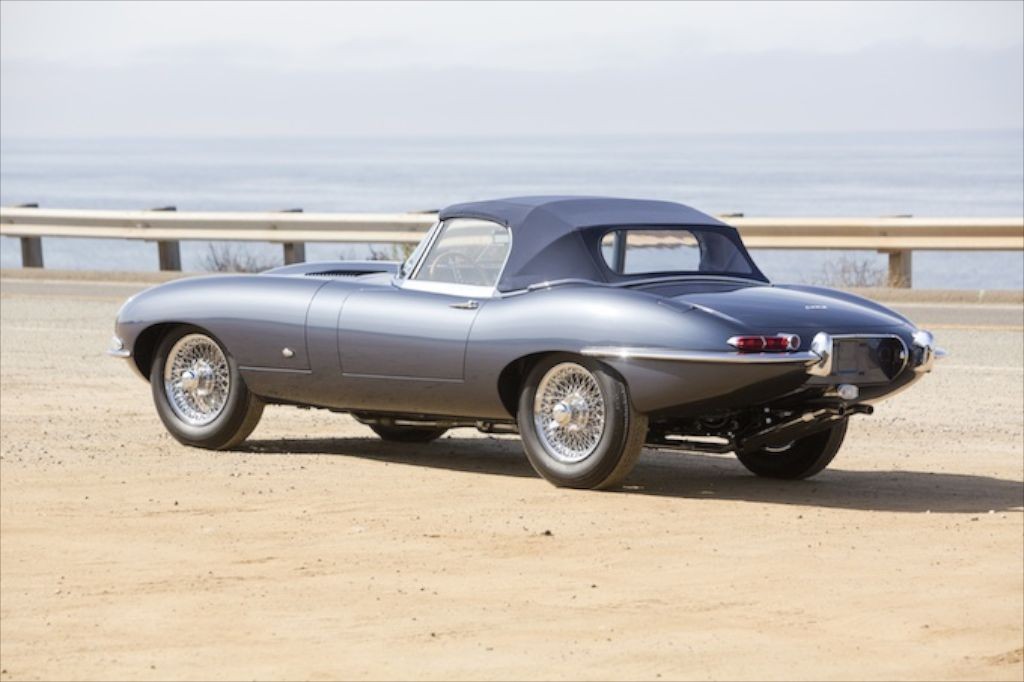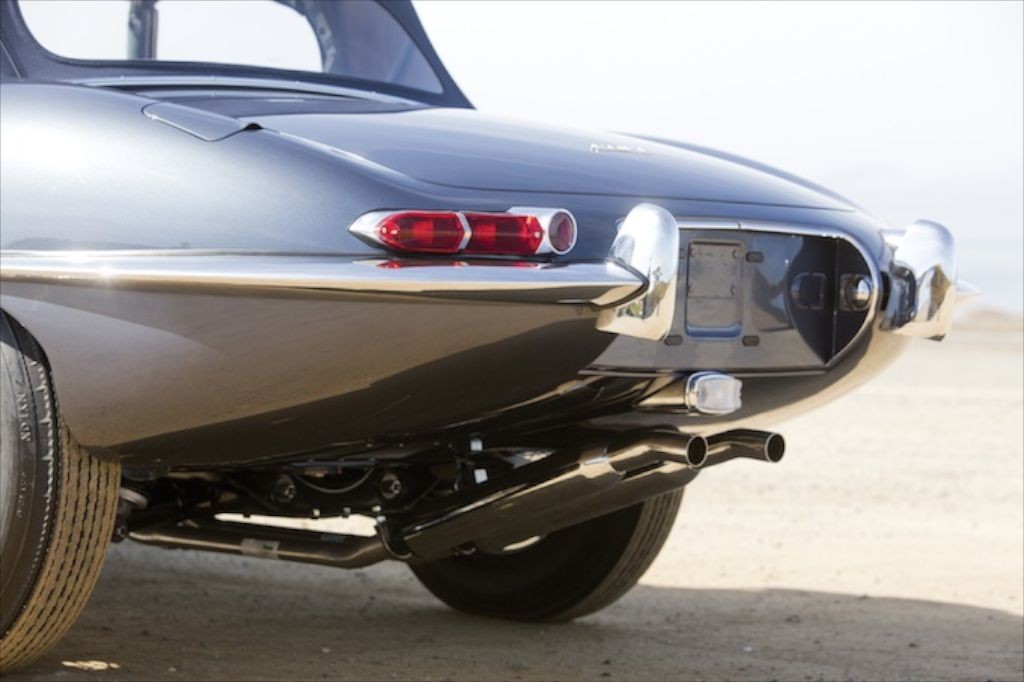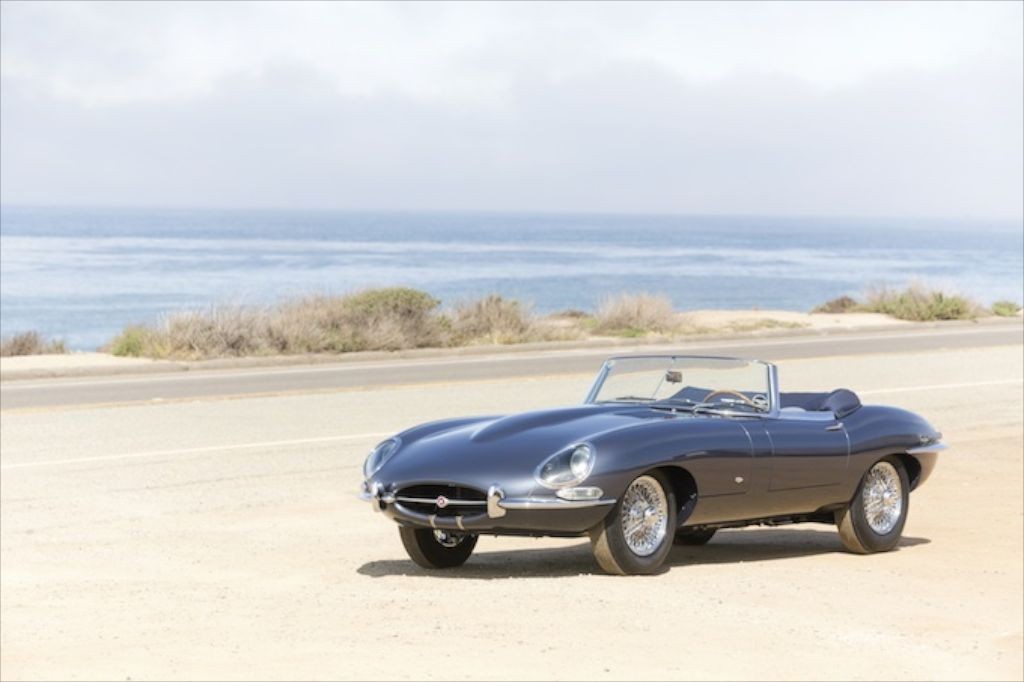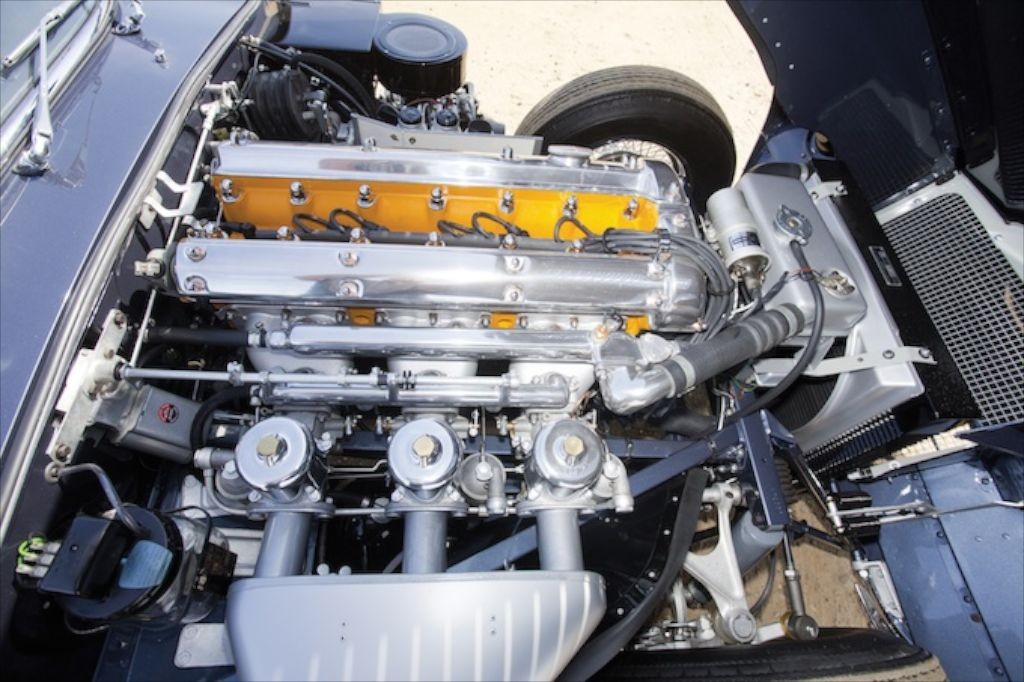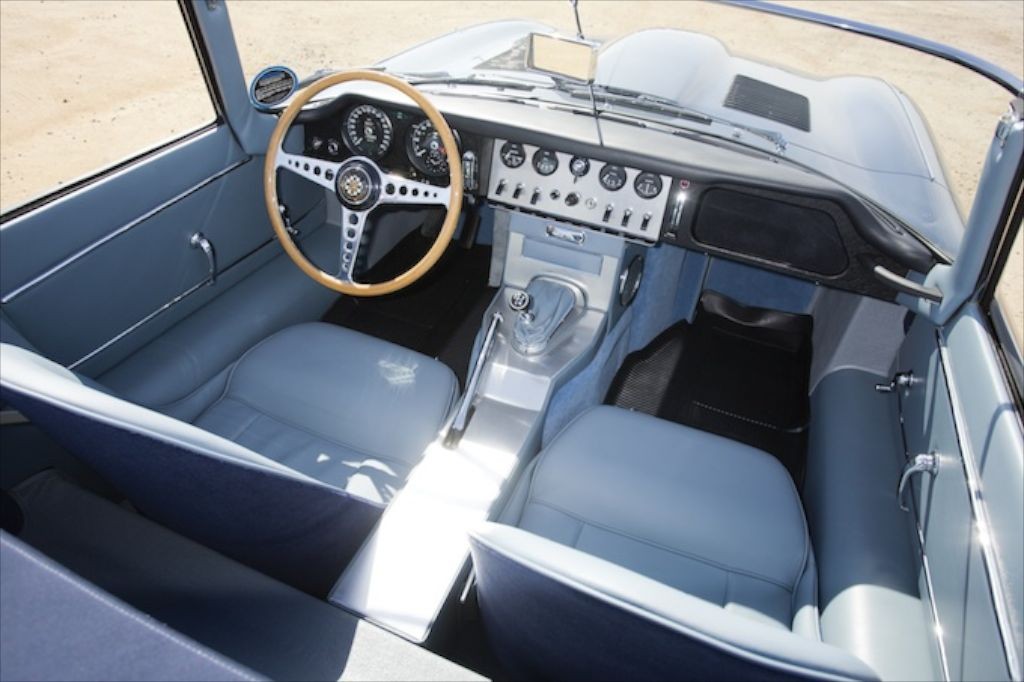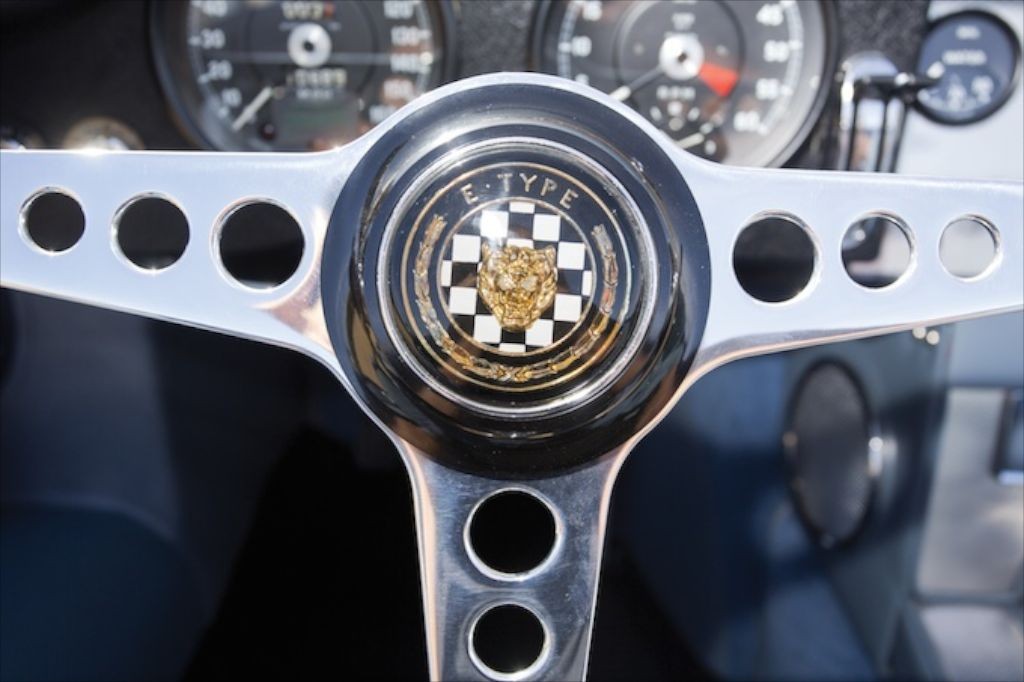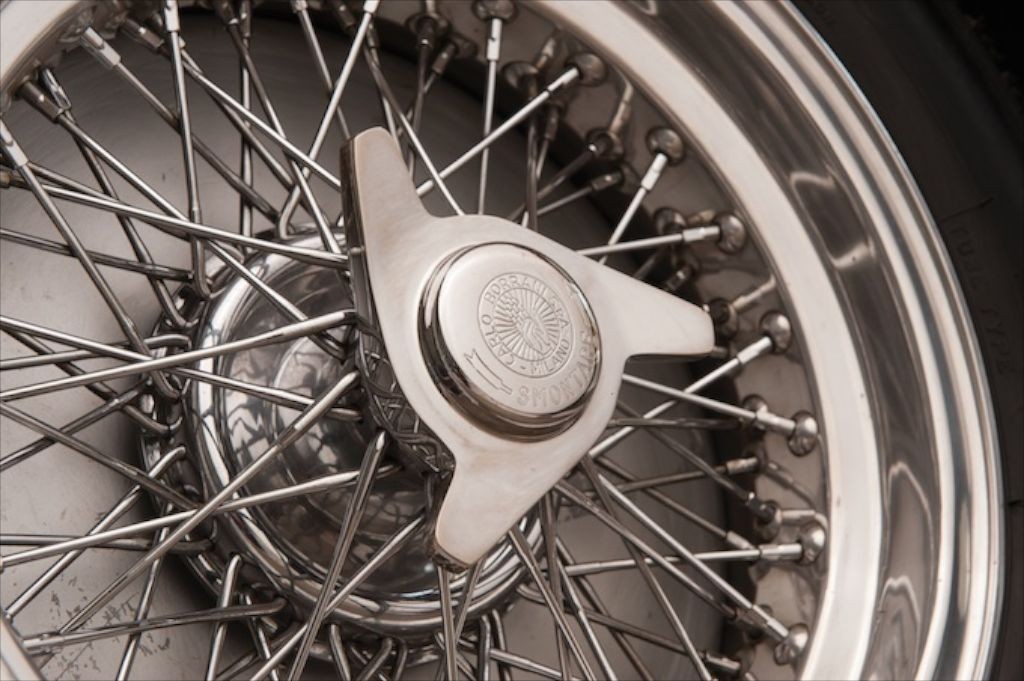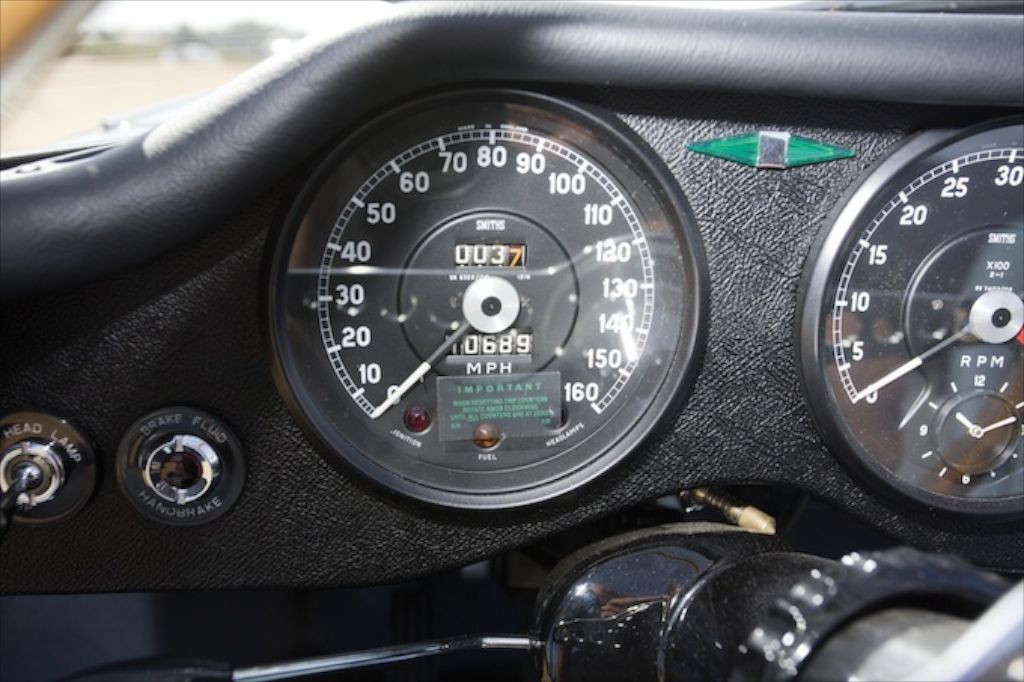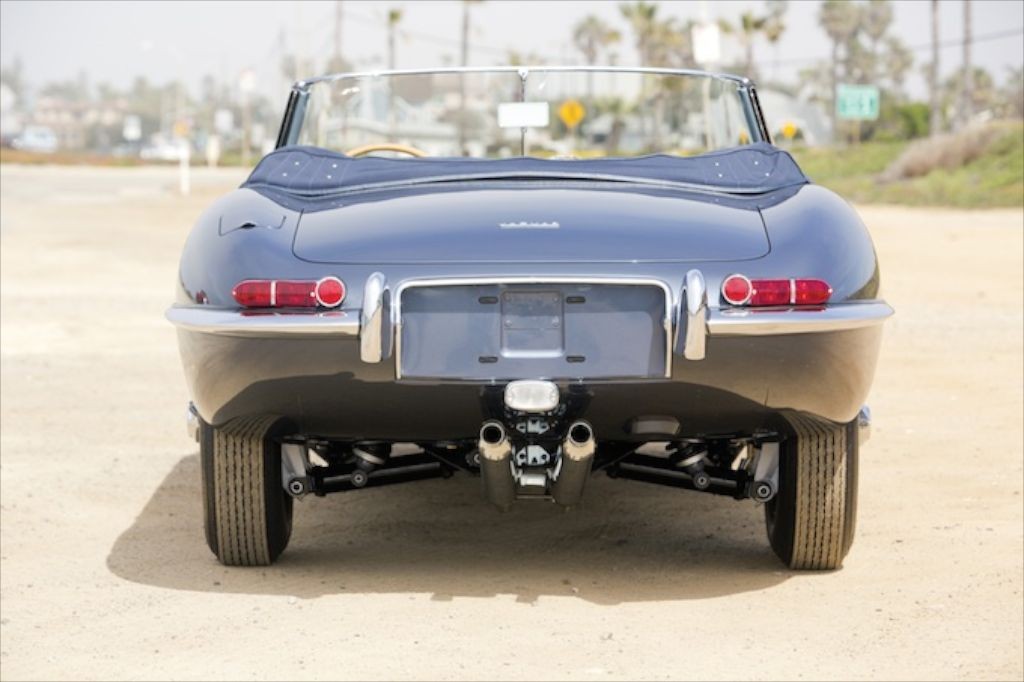Published in Monterey Car Week (Jaguar E-Type)
Editor’s Note: Being a huge fan of the early Jaguar E-Type, I am happy that Monterey Car Week could show you a Series 1 E-Type that’s spectacular. Thank you RM Auctions for allowing Monterey Car Week to bring these photos and the descriptive article to our readers/auto enthusiasts.
Photo Credit: Pawel Litwinski ©2014 Courtesy of RM Auctions
265 bhp, 3,781 cc DOHC straight-six, triple SU carburetors, transmission, independent front suspension with wishbones and a torsion bar, independent rear suspension with transverse link and trailing arms, and four-wheel power-assist disc brakes. Wheelbase: 96 in.
- Early outside-bonnet latch, flat-floor, welded-louver Series 1
- Received 100 points at the 2014 JCNA Concours and a First in Class at the 2014 San Marino Classic Concours
- Tremendous preservation of its original sheet metal and mechanicals
- Documented as matching-numbers engine and transmission by JDHT
Up until the mid-1950s, Jaguar was a well-respected builder of sporting cars, most notably the highly successful XK series and the pre-war SS Jaguars. But, in 1951 everything changed.
That was the year of the first of Jaguar’s victories at Le Mans, where the winning C-Type was soon followed by the even more competitive D-Type, which began to win in 1955. Over the space of about five years, the automaker transformed from a small British boutique to one of the most fearsome builders of serious race cars on the planet.
Their problem was that their passenger cars were a poor reflection of their on-track prowess. How did one reconcile the stunningly aerodynamic C- and D-Types with the old-world charm and styling of an XK150? Jaguar aerodynamicist Malcolm Sayer’s answer was to bring their racing and passenger car efforts together, and the result changed the sports car world forever.
The drivetrain of the 1961 Jaguar E Type picked up where the XK150 left off, offering the triple-carbureted, 265-horsepower, 3.8-liter straight-six from the S-specification XK150 and the same four-speed Moss transmission. All new, however, was a fully independent suspension that proved so successful that Jaguar would use variants on the same architecture underneath every car they made through to the late 1980s. Perhaps most important, from a performance standpoint, was its unitized body construction, which helped to drop curb weight by more than 300 pounds. As a result, with the same engine and transmission as the XK150S, 0–60 times dropped by a full second to 6.3, the car could lope along at 145 mph with two people and luggage, and the all-independent suspension “enhanced [your] driving,” as Car & Driver put it.
And clothing it all, of course, was the immortal new body, in roadster and coupe form. Despite influence from the C- and D-Types, the E-Type was not designed in a wind tunnel. Instead, Sayer sculpted it with a combination of instinct and mathematical formulae, both of which proved to be absolutely correct. Not only was the car a popular hit from the moment it appeared, but later aerodynamic studies and race track wins confirmed that it was right in every regard.
So popular was it that the small Jaguar factory was behind on orders for the next four years, meaning there was no compelling reason at all to make major changes to the car until 1964. Rather than large scale differences, early E-Type enthusiasts look for the small clues that differentiate their cars, such as chassis number 875331’s chromed escutcheon external bonnet latches, which are the famed “outside latches” that identify a very early E-Type. Very few outside-bonnet-latch cars were ever produced. This car, number 331 in production order, also sports flat floors and welded louvers, which were soon changed to more cost-efficient pressed metal.
In recent years, the supply of highly original early E-Types for restoration has dwindled sharply, so the discovery of an original low-mileage example was notable. Fortunately, it ended up in the care of an experienced Jaguar restoration facility, marque specialists Classic Showcase, which had the foresight to preserve as much of the car’s originality as possible. In their California shop, they performed a no-expense-spared rotisserie restoration of this gem. A 100-point result at the May 2014 Jaguar Owner’s Club of Los Angeles Annual Concours d’Elegance is evidence of the car’s quality. This perfect concours score is even more startling when one considers the restoration did not depend on reproduction parts but rather NOS and the refinishing of original mechanical parts and accessories. A few weeks later, “Blue Diamond” again won First in Class while at its second event, the San Marino Concours. Complementing that is a fully reworked and leaded body that has been finished in the same Opalescent Dark Blue as indicated on the Jaguar Daimler Heritage Trust Certificate. Its completely replated brightwork calls attention to the correct, early Series 1 outside-bonnet-latch roadster upper-door chrome finisher, and inside is all-new, complete, and correct light blue upholstery and a dark blue hood, as it had when it left the factory. The restoration process is completely documented on a comprehensive DVD, which accompanies the car.
No single car has ever cast a longer shadow over the sports car world than the E-Type, and while all of them have features to appeal to any sports car lover, there’s tremendous satisfaction in the first of the breed. As the Blue Diamond has been shown in a JCNA Concours only one time since restoration, and before that largely unseen since the 1960s, it is perfectly poised to embark on a long and fruitful second act, showing the world exactly what an early Series 1 should be.




